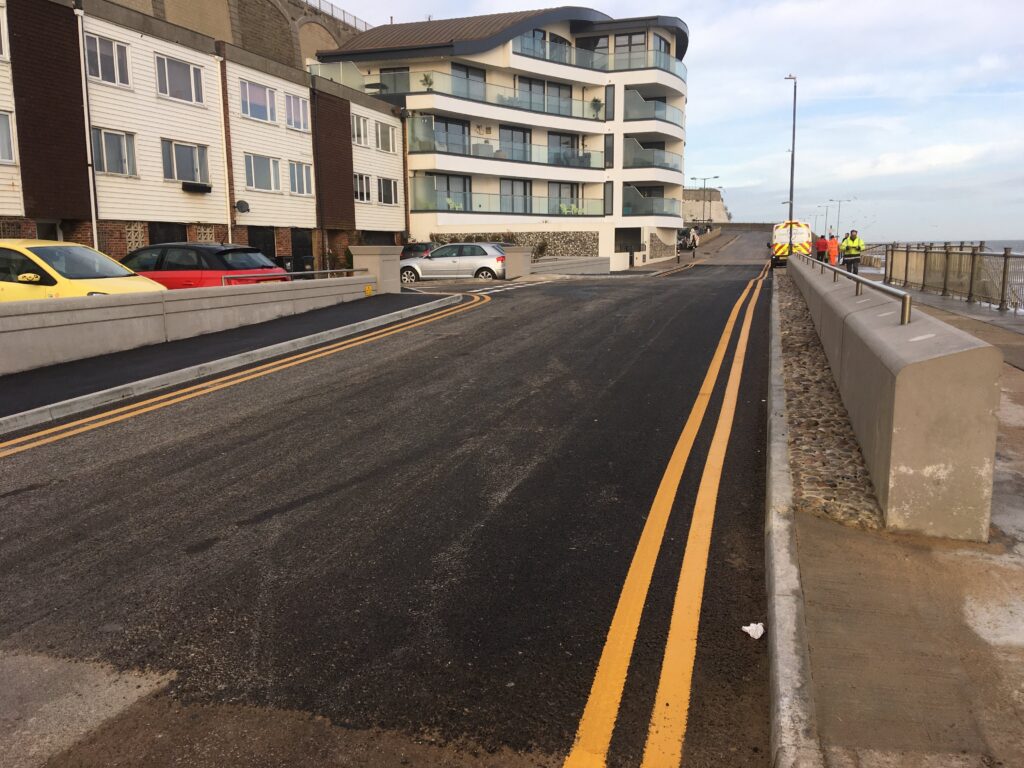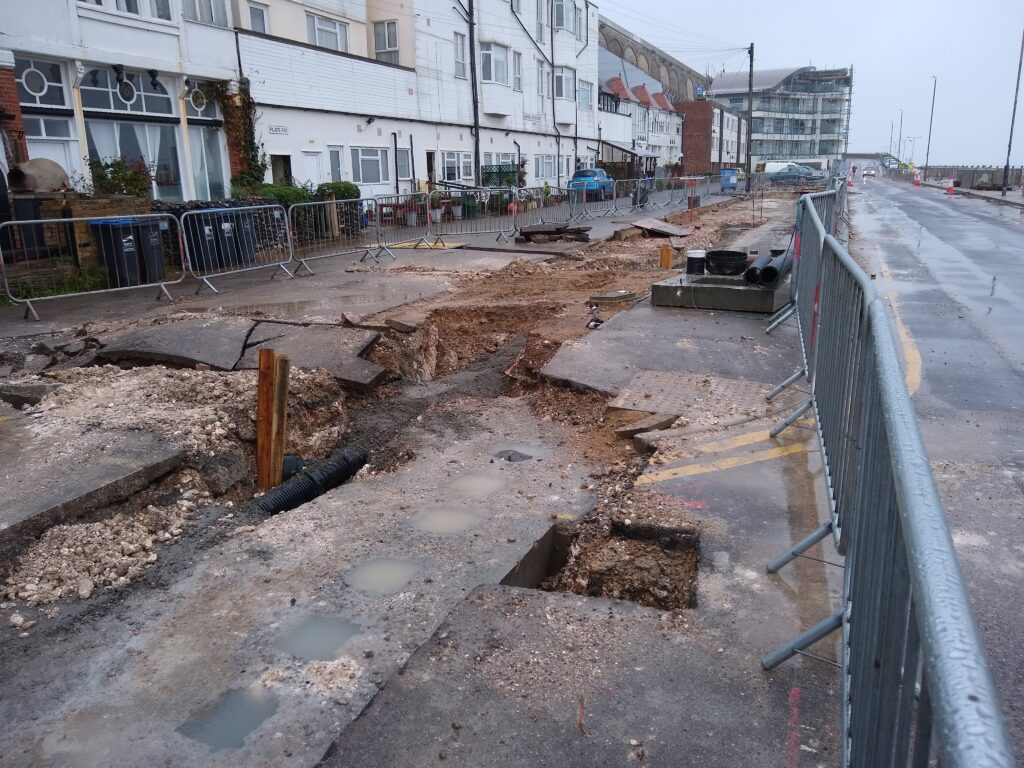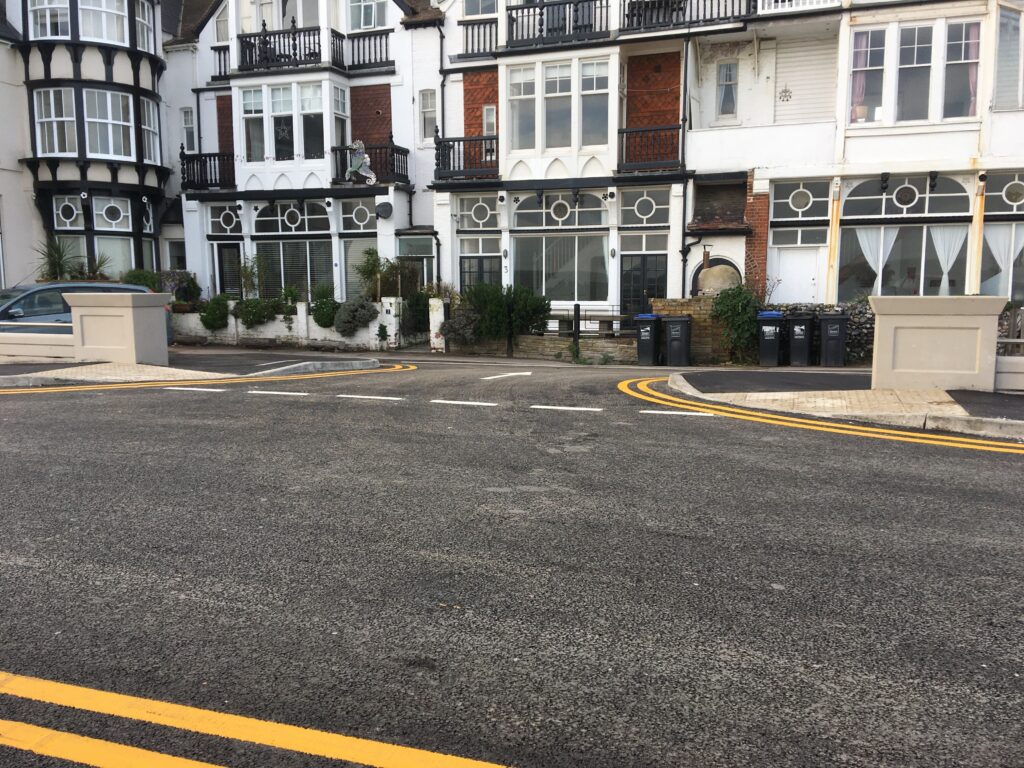This scheme was developed by Thanet District Council and funded by the Environment Agency. The scheme focused on the construction of new and improved coastal defences including the refacing of the concrete sea wall and extension of the existing concrete groyne. The estimated cost of the work was £900,000.
Ramsgate beach is situated immediately northeast of the Royal Harbour and is partly stabilised by the East Pier which was constructed between 1749 and 1850. The beach is backed by a near-vertical seawall along the majority of its length and in combination with the beach, this provides the only protection against coastal flooding and erosion to the residential dwellings located landward of the seawall on Marina Esplanade.

The scheme was to construct a new wave wall, undertake repair works to the existing seawall and make improvements to the existing concrete groyne to reduce the risk of flooding from wave overtopping and the failure of the seawall.

The primary mode of flooding in this location is wave overtopping and the magnitude of any particular event is strongly linked to the level of the beach in front of the seawall. The beach is, however, highly mobile and the area most susceptible to lowering is directly in front of the residential properties at risk of flooding.
The existing seawall was also showing signs of deterioration, which if not addressed would have led to the failure of the seawall and the onset of erosion. The properties behind the seawall are constructed on made-ground at the base of the cliff and therefore the loss of the seawall would result in rapid erosion and the loss of property.

The objectives of the project were to reduce the risk of flooding to the 18 households located behind the existing defences and to reduce the risk of seawall failure and the consequential loss of 36 households to erosion.
We eliminated the need for large flood gates at the entrance and exit to the minor road where the at-risk properties reside by raising the ground level between sections of the new wave wall.
One of the major challenges of the project was how mobile the sediment is, and the beach levels rising as we started work on re-facing the existing sea wall. This meant the beach had to be carefully dug out every day before the shutter was fixed in place and concrete poured, all before the tide flooded the working area.
